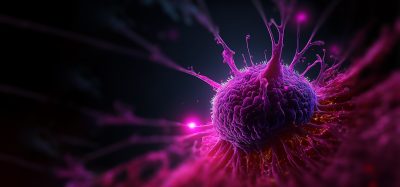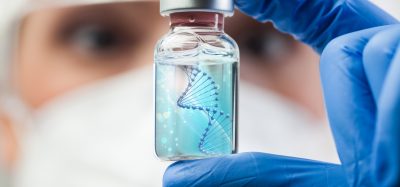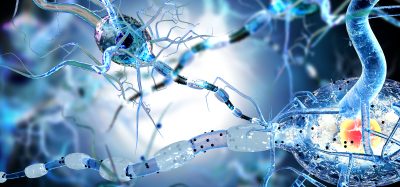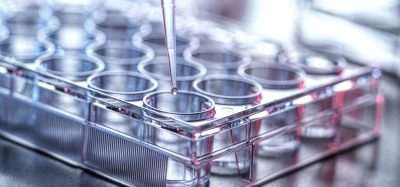Optimising analytical strategies for ADC development
Posted: 8 May 2025 | Ning Ren (Technical Director - WuXi AppTec) | No comments yet
Antibody-drug conjugates (ADCs) are transforming cancer therapy by enabling targeted drug delivery with minimised side effects, but their complex structure presents unique challenges in bioanalysis. This article explores cutting-edge strategies for optimising ADC evaluation, from quantifying drug-to-antibody ratios (DAR) to overcoming hurdles like payload interference and stability.
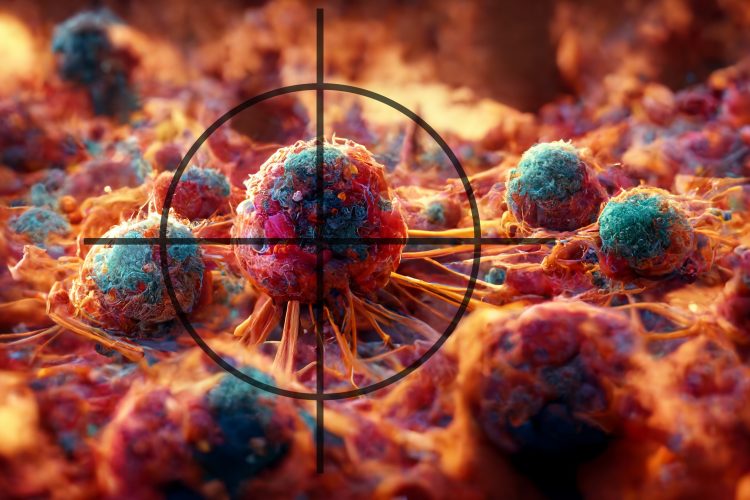

Antibody-drug conjugates (ADCs) represent a pivotal advancement in targeted oncology therapies, offering precise drug delivery while mitigating systemic toxicity. However, their complex structures – comprising monoclonal antibodies, linkers and cytotoxic payloads – require advanced bioanalytical strategies to assess pharmacokinetics (PK), drug-to-antibody ratios (DAR), stability and metabolite profiling.¹ As ADC development evolves, scientists must optimise analytical methodologies to enhance drug delivery, ensuring regulatory compliance and clinical efficacy.
This article explores best practices in optimising ADC analytical strategies, the latest trends in bioanalysis, and emerging solutions to key challenges in ADC characterisation. By examining case studies involving Telisotuzumab Vedotin and Disitamab Vedotin, drug developers can better understand how to refine ADC evaluation and stability assessments by integrating ligand binding assays (LBA) with liquid chromatography-mass spectrometry (LC-MS/MS) techniques.
Current challenges in ADC analytical strategies
Despite their therapeutic promise, ADCs pose unique analytical challenges due to their heterogeneity, conjugation variability and multiple molecular species. These challenges can significantly impact drug development timelines, regulatory approvals and therapeutic efficacy. Addressing these complexities requires highly specialised bioanalytical techniques to generate accurate and reproducible data that meet regulatory expectations.
Reduce preclinical failures with smarter off-target profiling
24 September 2025 | 15:00PM BST | FREE Webinar
Join this webinar to hear from Dr Emilie Desfosses as she shares insights into how in vitro and in silico methods can support more informed, human-relevant safety decisions -especially as ethical and regulatory changes continue to reshape preclinical research.
What you’ll learn:
- Approaches for prioritizing follow-up studies and refining risk mitigation strategies
- How to interpret hit profiles from binding and functional assays
- Strategies for identifying organ systems at risk based on target activity modulation
- How to use visualization tools to assess safety margins and compare compound profiles
Register Now – It’s Free!
Heterogeneous drug-antibody ratios (DARs)
DAR variability affects ADC potency and safety, requiring precise quantitation methods to ensure batch consistency. The DAR influences both efficacy and toxicity profiles, with high DAR values potentially leading to increased off-target effects and low DAR values resulting in reduced therapeutic activity.² ADC developers must implement rigorous analytical controls to maintain an optimal DAR range throughout manufacturing and clinical development.
Interference from free and conjugated payloads
Differentiating between the intact ADC, conjugated payload, and the free payload is critical for understanding therapeutic efficacy and off-target toxicity. Free payloads can lead to systemic toxicity, while variations in conjugated payload levels may impact drug efficacy.² Developers must carefully design bioanalytical assays that can accurately distinguish between these different molecular species to ensure the ADC maintains its intended therapeutic profile without unintended adverse effects.
Matrix effects in plasma samples
Protein binding and biotransformation of ADCs in plasma samples can introduce inconsistencies in quantification, complicating bioanalytical validation. Differences in protein interactions across patient populations may further impact ADC stability and clearance rates, making it essential to optimise sample preparation methods and selectivity of analytical assays.³ Failing to account for matrix effects may lead to misleading PK data, hindering dose selection and therapeutic index determination.
Regulatory compliance
Stringent guidelines mandate robust analytical validation and reproducibility to support investigational new drug (IND) applications and regulatory approvals. Regulatory agencies require comprehensive bioanalytical characterisation to ensure ADCs meet safety and efficacy standards. Developers must navigate evolving expectations by incorporating validated bioanalytical methods early in the drug development process, mitigating the risk of delays due to insufficient data.
Addressing these challenges can help ADC developers enhance drug stability assessments, refine pharmacokinetic profiling, and improve clinical outcomes. Optimising analytical strategies is essential for ensuring the successful translation of ADC candidates from early-stage research to market approval.
Optimising analytical strategies for ADC characterisation
Given the complexities associated with ADC bioanalysis, industry professionals are increasingly turning to integrated and multi-faceted analytical approaches to improve precision, reproducibility and regulatory compliance. A combination of ligand binding assays (LBA), hybrid liquid chromatography-tandem mass spectrometry (LC-MS/MS) and advanced mass spectrometry techniques provides a comprehensive framework for characterising ADCs at multiple levels, from total antibody concentration to conjugated and free-payload quantification. By optimising these methods, researchers can ensure robust pharmacokinetic profiling, enhance stability assessments, and facilitate more informed decision-making throughout the drug development pipeline.
The most effective strategies for ADC characterisation include:
- Ligand-binding assays (LBA). LBAs remain a cornerstone for total antibody and conjugated ADC measurements due to their high specificity and sensitivity.⁴ However, limitations such as cross-reactivity and signal saturation necessitate selecting anti-idiotypic antibodies to enhance assay specificity; adjusting sample dilution to minimise interference from endogenous immunoglobulins; and ensuring dilution linearity to improve assay robustness.
- Hybrid LC-MS/MS. Hybrid LC-MS/MS techniques complement LBA by accurately quantifying conjugated payloads.⁴ This approach involves isolating ADCs via anti-species or anti-idiotypic antibodies before MS analysis, releasing payloads enzymatically or chemically, and monitoring cleaved payloads to inform ADC degradation kinetics, in vitro and in vivo Hybrid LC-MS/MS provides superior specificity in measuring conjugated payloads compared to LBA. While LBA quantifies the total ADC concentration, it does not distinguish between different payload conjugation states. Hybrid LC-MS/MS offers enhanced resolution, allowing researchers to measure conjugated payloads with greater accuracy and reduced background interference from endogenous antibodies. This method also enables direct assessment of linker stability, a crucial factor in determining the drug’s pharmacokinetic profile and in vivo half-life.⁵
- LC-MS/MS. LC-MS/MS offers unparalleled specificity and dynamic range to characterise free payloads and metabolites. Optimisation strategies include developing species-specific calibration curves to ensure accuracy across preclinical and clinical samples, employing multiple reaction monitoring (MRM) to enhance selectivity in detecting free payloads in complex matrices, and assessing metabolite stability across species to inform translational pharmacokinetics.
Each analytical strategy plays a distinct role in addressing specific aspects of ADC bioanalysis. LBA remains a primary tool for quantifying total antibody levels and conjugated ADCs, whereas hybrid LC-MS/MS techniques provide superior specificity in measuring conjugated payloads. Meanwhile, LC-MS/MS-based approaches enable precise quantification of free payloads and metabolites, shedding light on the pharmacokinetic and toxicokinetic properties of ADCs. The combination of these methods ensures a more holistic evaluation of ADC behaviour, supporting both regulatory submissions and clinical development efforts.
Two ADCs that illustrate the impact of optimised analytical strategies are Telisotuzumab Vedotin (Teliso-V) and Disitamab Vedotin (DV). Both use monomethyl auristatin E (MMAE) as a cytotoxic payload linked via a cleavable linker.
- Telisotuzumab Vedotin: LBA assays demonstrated ADC stability across a 96-hour plasma stability study. Hybrid LC-MS/MS confirmed intact conjugated payload retention, informing linker optimisation. Free MMAE quantification via LC-MS/MS revealed degradation kinetics, guiding dose adjustments. The combined use of these techniques allowed researchers to fine-tune formulation stability, ensuring the drug’s efficacy remained consistent throughout the treatment cycle.⁵
- Disitamab Vedotin: LBA and hybrid LC-MS/MS analysis identified species-dependent variations in DAR maintenance. Free payload profiling indicated distinct metabolic pathways, influencing preclinical toxicity modelling. Optimised bioanalytical strategies improved ADC batch consistency and regulatory submission robustness.⁶ These analytical improvements helped refine dosing strategies and ensure patient safety by closely monitoring the drug’s therapeutic window.
Future outlook: innovations in ADC analysis
The future of ADC analysis is poised for transformative advancements driven by cutting-edge technologies and regulatory expectations. Key developments include:
- Advanced technologies – Intelligent systems and machine learning are increasingly used to interpret complex bioanalytical datasets, enabling rapid identification of variability in ADC heterogeneity and improving assay reproducibility
- Next-generation mass spectrometry platforms – High-resolution and high-throughput MS techniques will refine ADC metabolite characterisation, allowing for better differentiation of ADC molecular species and their pharmacokinetics
- Automation and miniaturisation – Microfluidic LC-MS/MS platforms and robotic sample processing can enhance assay throughput, reduce manual variability and improve reproducibility, streamlining ADC characterisation workflows
- Expanded regulatory frameworks – With increasing adoption of ADC therapies, regulatory agencies are expected to refine bioanalytical guidelines, prompting industry-wide standardisation in ADC stability testing and PK profiling
- Integration of multi-omics approaches – Leveraging proteomics and metabolomics in ADC bioanalysis can provide deeper insights into drug metabolism, immune response and potential resistance mechanisms, informing personalised treatment strategies.
By staying ahead of these trends, bioanalytical laboratories can ensure the continued advancement of ADCs as a cornerstone of targeted cancer therapy.
A final word: embracing ADCs’ potential
ADC development presents challenges and opportunities in drug development. Industry leaders must embrace advanced analytical technologies, next-generation mass spectrometry, and automated microfluidic platforms to stay competitive and drive innovation. Collaboration among regulatory agencies, pharmaceutical companies and academic researchers will be essential to standardising analytical approaches and ensuring the safe, effective and efficient deployment of ADCs.
Ultimately, the future of ADCs lies in refining existing methodologies and pioneering new paradigms that will push the boundaries of targeted therapeutics, improving patient outcomes and shaping the next generation of precision oncology.
References:
- Shastry M, Yardley DA. Rise of Antibody-Drug Conjugates: The Present and Future. Am Soc Clin Oncol Educ Book. 2023;43:1-10. doi:10.1200/EDBK_390094.
- Wagh A, Song H, Zeng M, et al. Challenges and new frontiers in analytical characterization of antibody-drug conjugates. mAbs. 2018;10(2):222-243. doi:10.1080/19420862.2017.1412025.
- Stephan JP, Kozak KR, Wong WL. Challenges in developing bioanalytical assays for characterization of antibody-drug conjugates. 2011 Mar;3(6):677-700. doi: 10.4155/bio.11.30.
- Wang J, Gu H, Liu A, et al. Antibody–drug conjugate bioanalysis using LB–LC–MS/MS hybrid assays: strategies, methodology and correlation to ligand-binding assays. Bioanalysis. 2016;8(13):1383–401. doi:10.4155/bio-2016-0017.
- Telisotuzumab Vedotin | ABBV 399 | ABBV-399 | Teliso-V | ABT-700-vcMMAE | PR-1420682. ADC Review.
- Disitamab Vedotin | RC-48 | RC 480-ADC | RC48 | 爱地希® | Aidixi®. ADC Review.


Ning Ren – Technical Director, WuXi AppTec
Ning Ren is the technical director and group leader for the discovery LM BA group at WuXi AppTec’s laboratory testing division in New Jersey, US. Her team provides bioanalytical services for biomarkers and various modalities, including ADCs, oligonucleotides, antibodies and fusion proteins. Prior to joining WuXi AppTec in 2015, she worked at Merck for more than 19 years. She received her degrees from the University of Rochester and Beijing Normal University and is the author or co-author of more than 26 peer-reviewed publications.
Related topics
Analytical Techniques, Antibodies, Assays, Biologics, Biopharmaceuticals, Cancer research, Immuno-oncology, Immuno-oncology therapeutics, Immunoassays
Related conditions
Cancer
Related organisations
WuXi AppTec
Related people
Ning Ren (Technical Director - WuXi AppTec)



